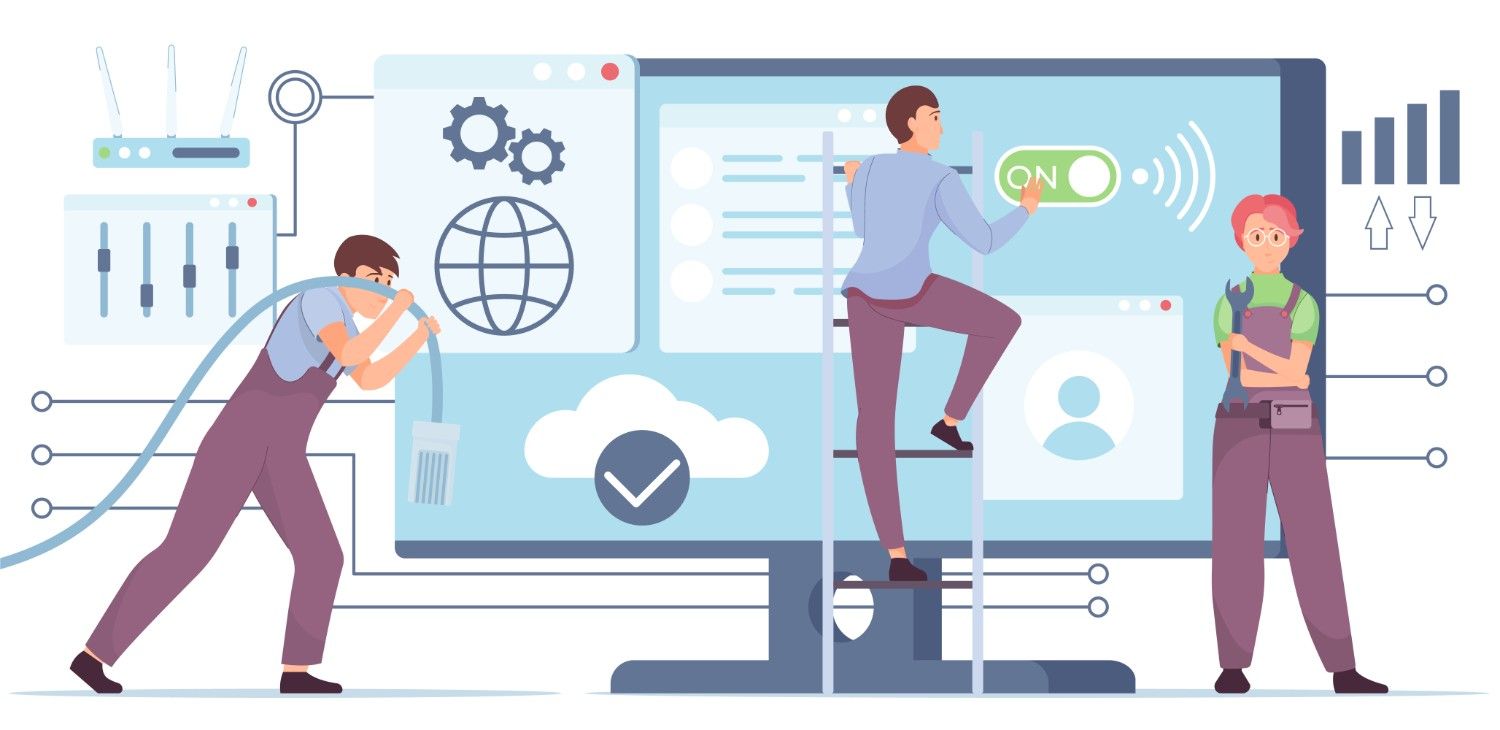AI for HR Governance, Risk, and Compliance (GRC) Manager
This article explores how AI is revolutionizing HR governance, risk, and compliance (GRC). It highlights the shift from manual processes to AI-powered tools like machine learning, natural language processing, and computer vision for predictive risk analysis, policy management, and workplace safety. With strategic implementation, AI enables organizations to automate regulatory monitoring, enhance compliance training, and proactively manage employee relations risks—turning HR compliance into a strategic advantage.
The world of HR compliance is changing rapidly, and it’s becoming a real challenge for organizations everywhere to keep up. A recent survey by PwC found that 80% of HR leaders think AI can help them tackle compliance tasks more quickly and accurately.
This finding underscores a growing awareness that old-school manual methods just can’t cut it anymore when it comes to today’s regulatory landscape. As we head into 2025, AI is proving to be a game-changer in HR, transforming how businesses handle governance, risk management, and compliance.
More and more organizations are embracing HR software to help manage complex regulatory requirements and streamline operations.
Understanding the Intersection of AI and HR GRC
The connection between artificial intelligence and HR governance, risk, and compliance marks a significant change in how organizations handle their regulatory responsibilities. This blend opens up exciting new possibilities to tackle the compliance challenges we face today.
The Evolution of HR Compliance Frameworks
In the past, HR compliance frameworks were heavily dependent on manual processes, which meant teams had to be on constant alert for regulatory changes and update policies accordingly. As regulations have multiplied across different jurisdictions, these methods have become less practical.
Today’s HR governance frameworks are evolving to include AI, which automates the monitoring, analysis, and implementation of compliance requirements. This shift leads to more agile systems that can quickly adapt to changes.
Why Manual Methods Are Failing
Manual compliance management tools just can’t keep up with the sheer volume and complexity of today’s regulatory landscape. HR teams often find themselves overwhelmed with information, facing conflicting requirements from various jurisdictions, and risking the chance of missing crucial updates. These hurdles can result in increased compliance violations, hefty fines, and reputational harm that could have been avoided with more sophisticated systems.
The Business Case for AI Implementation
Adopting AI for compliance can yield a solid return on investment by cutting labor costs, speeding up response times, and reducing compliance violations. Organizations that utilize GRC software solutions often see notable improvements in compliance accuracy, allowing HR professionals to shift their focus from administrative tasks to strategic initiatives.
The argument for investing in AI becomes even stronger when weighing the potential costs of non-compliance against the investment in AI-driven systems. As traditional methods fall short, forward-thinking organizations are turning to AI technologies that will serve as the foundation for the next generation of compliance systems. Let’s dive into the key technologies that are transforming HR compliance.
AI-Powered HR GRC: Core Technologies Reshaping Compliance
At the heart of every successful AI-driven compliance solution are specialized technologies that work in harmony to automate and improve various aspects of HR governance. These technologies offer capabilities that far exceed what traditional systems can provide.
Machine Learning for Predictive Risk Analysis
Machine learning algorithms are the backbone of contemporary risk management in HR. They sift through historical data to spot patterns and identify potential compliance risks before they even arise.
These systems can pick up on subtle signs of possible issues, such as workplace harassment, by analyzing communication trends or spotting policy breaches. By implementing machine learning systems, organizations can transition from a reactive approach to a proactive one, tackling issues before they escalate into serious violations.
Natural Language Processing for Policy Management
NLP capabilities are changing the game for how organizations handle policies. They automate the creation, updating, and distribution of policies across different jurisdictions. Advanced NLP systems can comb through regulatory documents, pull out relevant requirements, and evaluate their effects on existing policies.
This automation keeps policies up-to-date, clear, and easily accessible for all employees, while significantly cutting down the manual work needed to keep compliance documentation in check.
Computer Vision for Workplace Safety
Computer vision technologies are essential for monitoring physical workplaces to ensure safety compliance, helping organizations adhere to increasingly stringent occupational safety regulations. These systems can spot potential OSHA violations by analyzing video footage of workspaces, ensuring that equipment is used correctly and safety protocols are followed.
The automated documentation generated provides valuable audit trails that showcase ongoing compliance efforts. When these powerful AI technologies are applied to specific HR compliance challenges, they unlock remarkable capabilities. Examining their practical applications shows just how they are transforming compliance management across organizations.
The Transformative Applications of AI in HR GRC
AI technologies are making waves in how organizations enhance their compliance capabilities within HR functions. Each application tackles specific challenges while contributing to a more robust compliance framework.
Intelligent Regulatory Monitoring
AI systems continuously scan for regulatory changes across various global jurisdictions, automatically flagging updates that matter to your organization. This ensures that HR teams stay on top of important changes that could impact their compliance status. By prioritizing updates based on the organization's risk profile, teams can focus on the most pressing issues first, making compliance management a lot more efficient.
Automated Compliance Training and Verification
AI has revolutionized the way organizations handle mandatory training requirements. With personalized learning paths tailored to each employee's role and existing knowledge, training becomes relevant and time-efficient.
Real-time verification of certification status and automatic tracking of expiration dates help close any compliance gaps. These systems can also assess training effectiveness through behavioral analysis, pinpointing areas where further education might be beneficial.
Enhanced Employee Relations Risk Management
Predictive analytics can help spot potential workplace conflicts before they escalate into serious problems. Early intervention systems for preventing harassment and discrimination leverage AI to detect troubling patterns in workplace communications or behaviors.
Sentiment analysis offers ongoing insights into workplace culture, enabling organizations to foster healthy environments that comply with anti-discrimination and harassment regulations.
With these innovative applications, organizations can create comprehensive compliance frameworks that meet modern regulatory demands while boosting efficiency and effectiveness.
Implementing AI for HR GRC: Strategic Framework
To successfully weave AI into your compliance efforts, you need a well-structured approach that takes into account technology, organizational dynamics, and change management. This framework serves as a guide for organizations, no matter where they are on their AI compliance journey.
Assessment and Planning
Start by thoroughly analyzing your current compliance processes to pinpoint any gaps or inefficiencies. Involve stakeholders from various parts of the organization to ensure that all compliance needs are met. By mapping out how to integrate with existing HR systems, you can create a practical implementation plan that minimizes disruptions while maximizing the benefits.
Technology Selection and Implementation
Select compliance management tools that fit your specific regulatory landscape and organizational requirements. Keep in mind factors like user-friendliness, integration capabilities, and the provider's history with regulatory updates. Implementing the system should be done in phases, allowing for learning and adjustments as it rolls out across different areas of the organization.
Change Management and Training
Getting HR teams ready for AI-enhanced compliance processes is key to successful adoption. Tackle common resistance by clearly communicating the benefits and offering thorough training on the new systems.
Fostering AI literacy within compliance teams is essential so they can effectively utilize the technology's strengths while being aware of its limitations. With a strategic approach to implementation, organizations can seamlessly integrate AI into their compliance frameworks, leading to more effective and efficient systems.
Final Thoughts
The way AI is being woven into HR governance, risk, and compliance marks a significant change that’s reshaping how organizations tackle their regulatory responsibilities. By adopting these technologies, innovative companies are transforming compliance from just a necessary expense into a strategic asset. Investing in advanced tools like GRC software ensures your compliance strategy remains agile and future-ready.
Organizations that effectively harness AI for GRC can expect to see substantial competitive advantages, including reduced risks, lower costs, and more robust operations. As regulatory pressures continue to mount, the real question isn’t whether to embrace AI for compliance, but rather how swiftly you can roll it out to stay ahead of the curve.
FAQs
1) What Are the Primary Benefits of AI in HR Compliance?
Ans: AI significantly boosts compliance efficiency by automating routine tasks, delivering real-time updates on regulations, and spotting potential risks before they lead to violations. This proactive strategy not only cuts down on costs related to penalties but also allows HR teams to concentrate on strategic initiatives instead of getting bogged down in administrative tasks.
2) What Privacy Concerns Should Be Addressed?
Ans: Organizations need to set clear guidelines for AI-driven monitoring, ensuring that employees are informed about what data is being collected and how it will be used. By implementing robust data protection measures and adhering to relevant privacy laws, companies can build trust and reduce the legal risks tied to employee monitoring.
3) How Can Small and Medium Businesses Benefit?
Ans: Cloud-based AI compliance solutions are making advanced tools available to smaller organizations without the need for extensive IT infrastructure. These systems often operate on subscription models that grow with the organization, enabling SMBs to access enterprise-level compliance capabilities that were once only within reach of larger firms.

Subscribe & get all related Blog notification.





Post your comment